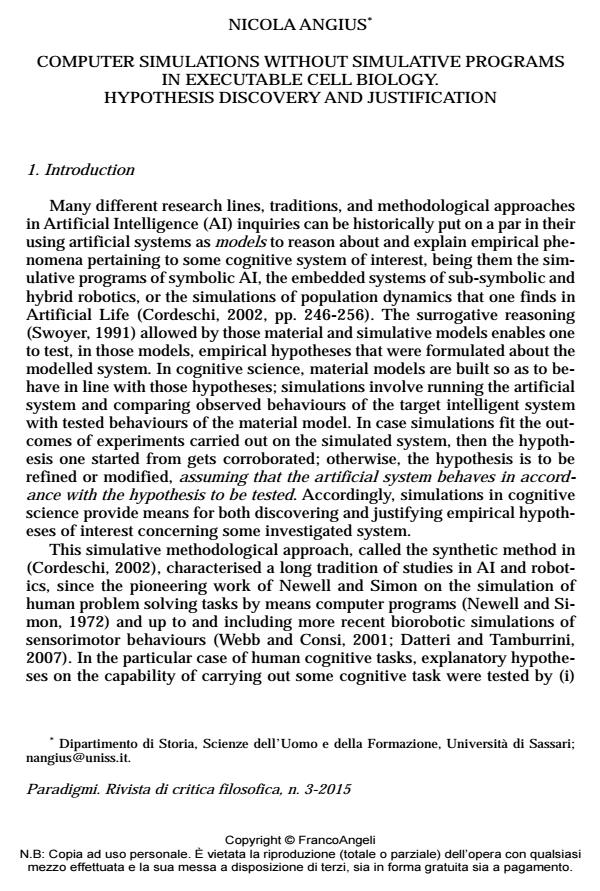Computer simulations without simulative programs in executable cell biology. Hypothesis discovery and justification
Titolo Rivista PARADIGMI
Autori/Curatori Nicola Angius
Anno di pubblicazione 2016 Fascicolo 2015/3
Lingua Inglese Numero pagine 16 P. 67-82 Dimensione file 118 KB
DOI 10.3280/PARA2015-003005
Il DOI è il codice a barre della proprietà intellettuale: per saperne di più
clicca qui
Qui sotto puoi vedere in anteprima la prima pagina di questo articolo.
Se questo articolo ti interessa, lo puoi acquistare (e scaricare in formato pdf) seguendo le facili indicazioni per acquistare il download credit. Acquista Download Credits per scaricare questo Articolo in formato PDF

FrancoAngeli è membro della Publishers International Linking Association, Inc (PILA)associazione indipendente e non profit per facilitare (attraverso i servizi tecnologici implementati da CrossRef.org) l’accesso degli studiosi ai contenuti digitali nelle pubblicazioni professionali e scientifiche
L’applicazione dei metodi formali per l’analisi di programmi reattivi che simulano i comportamenti di sistemi cellulari in biologia computazionale è presa in esame per gettare nuova luce sugli approcci simulativi in Intelligenza Artificiale e Vita Artificiale. In primo luogo, si sottolinea come i programmi che simulano i comportamenti di molti sistemi reattivi cellulari sono più proficuamente esaminati per mezzo di modelli eseguibili delle esecuzioni del programma simulativo. Tali modelli risultano essere rappresentazioni sia del programma simulativo che del sistema cellulare simulato. In secondo luogo, si evidenzia come i processi di scoperta di comportamenti di interesse del sistema simulato vengano effettuati attraverso verifiche algoritmiche condotte sul modello formale che rappresenta i fenomeni biologici di studio. Infine, un tratto metodologico distintivo dell’attuale biologia computazionale viene riconosciuto nel fatto che le ipotesi avanzate sulla base di modelli eseguibili non sono confermate o falsificate testando il programma simulativo, il quale non viene nemmeno codificato, ma effettuando esperimenti in vitro finalizzati ad osservare i comportamenti del sistema naturale corrispondenti ai percorsi del modello che soddisfano o violano le ipotesi in corso di valutazione
Parole chiave:Biologia eseguibile, Filosofia dell’informatica, Metodi simulativi, Model-Based reasoning, Model checking, Vita artificiale.
- Explaining Engineered Computing Systems’ Behaviour: the Role of Abstraction and Idealization Nicola Angius, Guglielmo Tamburrini, in Philosophy & Technology /2017 pp.239
DOI: 10.1007/s13347-016-0235-1
Nicola Angius, Computer simulations without simulative programs in executable cell biology. Hypothesis discovery and justification in "PARADIGMI" 3/2015, pp 67-82, DOI: 10.3280/PARA2015-003005